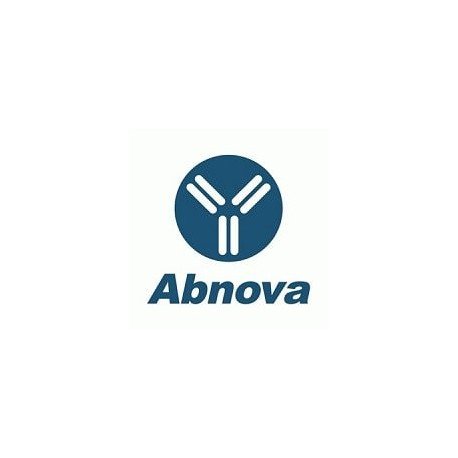Cart 0 Product Products (empty)
No products
To be determined Shipping
0,00 € Total
Prices are tax excluded
Product successfully added to your shopping cart
Quantity
Total
There are 0 items in your cart. There is 1 item in your cart.
Total products (tax excl.)
Total shipping (tax excl.) To be determined
Total (tax excl.)
Data sheet of Syn1 (phospho S9) polyclonal antibody
| Brand | Abnova |
| Product type | Primary antibodies |
| Reactivity | Bovine,Clawed frog,Human,Mouse,Rat,Zebra fish |
| Host species | Rabbit |
| Applications | WB-Ti |
More info about Syn1 (phospho S9) polyclonal antibody
| Brand: | Abnova |
| Reference: | PAB9664 |
| Product name: | Syn1 (phospho S9) polyclonal antibody |
| Product description: | Rabbit polyclonal antibody raised against synthetic phosphopeptide of Syn1. |
| Gene id: | 24949 |
| Gene name: | Syn1 |
| Gene alias: | - |
| Gene description: | synapsin I |
| Immunogen: | Synthetic phosphopeptide corresponding to residues surrounding S9 of rat Syn1. |
| Protein accession: | P17599 |
| Form: | Liquid |
| Recommend dilutions: | Western Blot (1:1000) The optimal working dilution should be determined by the end user. |
| Storage buffer: | In 10 mM HEPES, 150 mM NaCl, pH 7.5 (50% glycerol, 10% BSA) |
| Storage instruction: | Store at -20°C. Aliquot to avoid repeated freezing and thawing. |
| Quality control testing: | Antibody Reactive Against Synthetic Peptide. |
| Product type: | Primary antibodies |
| Host species: | Rabbit |
| Antigen species / target species: | Rat |
| Specificity: | This antibody also weakly labels the ~55k synapsin II protein which has a similar phosphorylation site to that of Ser9 on synapsin I. |
| Reactivity: | Bovine,Clawed frog,Human,Mouse,Rat,Zebra fish |
| Application image: |  |
| Application image note: | Western blot of rat cortex lysate showing specific immunolabeling of the ~78k Syn1 phosphorylated at Ser9 (Control). The phosphospecificity of this labeling is shown in the second lane (lambda-phosphatase: lambda-Ptase). The blot is identical to the control except that it was incubated in lambda-Ptase (1200 units for 30 min) before being exposed to the Syn1 (phospho S9) polyclonal antibody (Cat # PAB9664). The immunolabeling is completely eliminated by treatment with lambda-Ptase. |
| Applications: | WB-Ti |
| Shipping condition: | Dry Ice |
| Publications: | Opposing changes in phosphorylation of specific sites in synapsin I during Ca2+-dependent glutamate release in isolated nerve terminals.Jovanovic JN, Sihra TS, Nairn AC, Hemmings HC Jr, Greengard P, Czernik AJ. J Neurosci. 2001 Oct 15;21(20):7944-53. |


